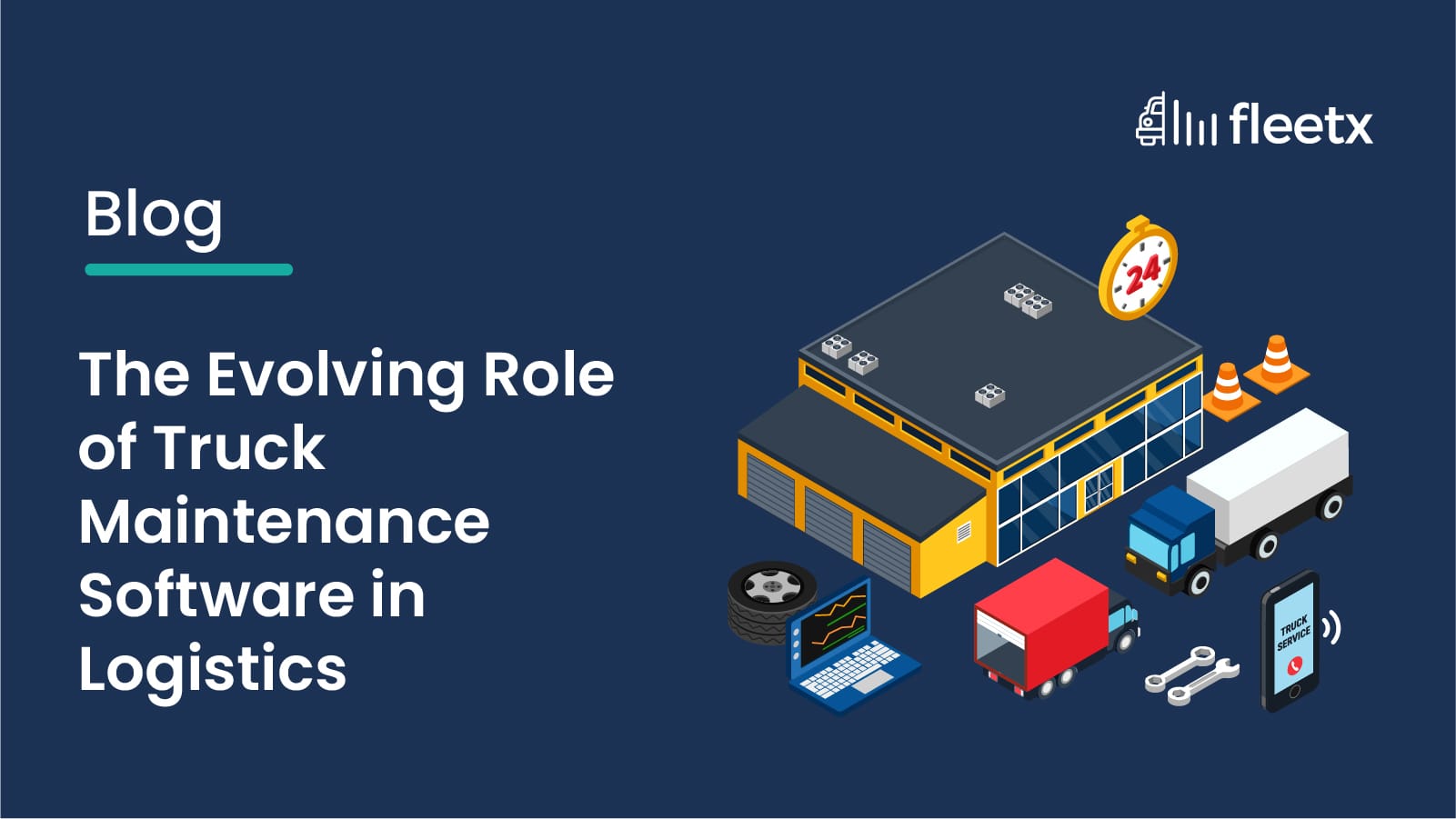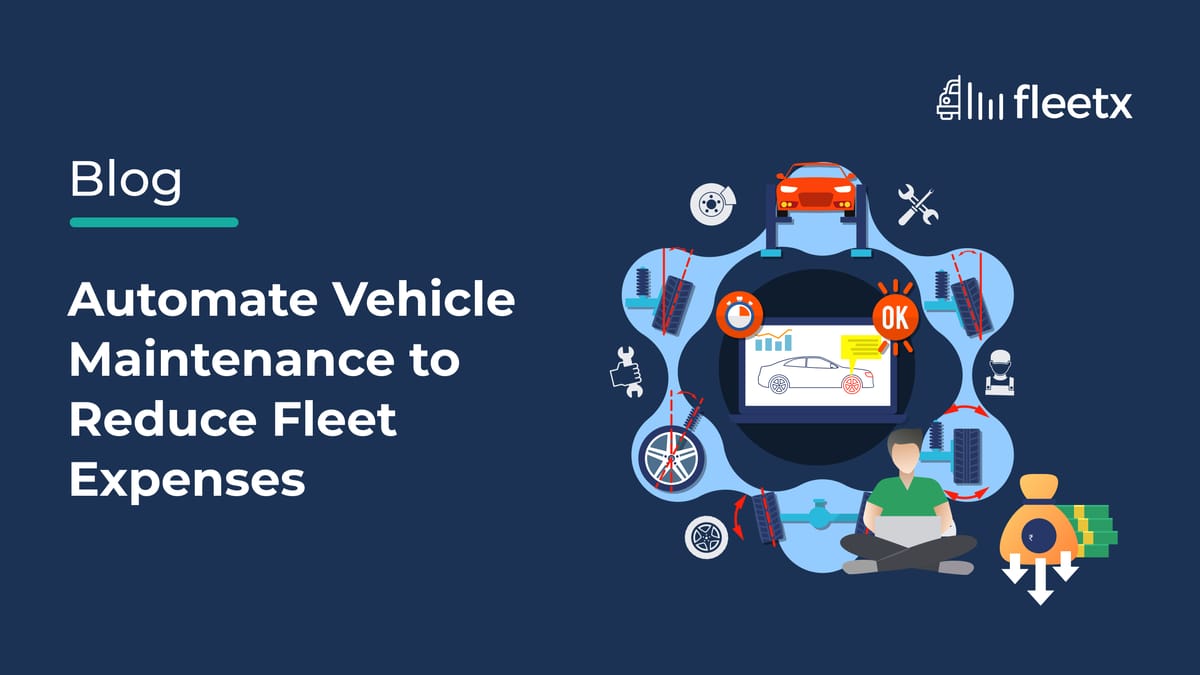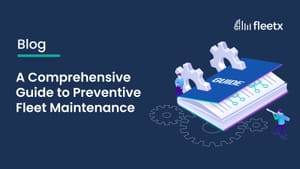
Over the years, there has been a sharp rise in truck fleet repair costs, influencing the overall fleet management costs significantly. Moreover, the condition of the trucks/vehicles serves as a general indicator of the state of the transport business.
However, tracking and managing the maintenance schedule of a truck's fleet and identifying the specific requirement of either preventive or predictive maintenance for each vehicle can be a challenging task to accomplish, besides other associated hurdles.
Types of Truck Fleet Maintenance
The maintenance approach varies based on the repair/inspection needs of every truck, supporting fleet managers in improving cost efficiency and fleet reliability.
- Preventive Activities: Routine checks that help in avoiding sudden breakdowns in the truck fleet - such as oil change, brake inspections, tyre consumption, etc.
- Corrective Activities: Repairs for the functional issues identified - such as engine glitch or part replacement.
- Regulatory Mandates: To ensure the fleet’s adherence to regulatory standards - including emission checks and other safety measures.
How is Manual Maintenance Challenging
Fulfilling the maintenance needs of multiple fleet vehicles can become a major hurdle for businesses if undertaken manually.
Planning & Tracking Maintenance Schedules - Balancing routine inspections with unexpected repairs and aligning servicing with driver availability often lead to scheduling errors and operational disruptions.
Cost Control - Balancing maintenance expenses and operational costs is a constant challenge for fleet managers. Regular inspections also increase the maintenance cost center while averting costly breakdowns.
Tracking Maintenance Records - Accurate and accessible service records are crucial to identify trends, decide the future maintenance needs, and ensure regulatory adherence. Manual tracking is error-prone and time-consuming.
Parts Inventory Management - Avoiding excess parts inventory is crucial to managing inventory costs. On the other hand, maintaining sufficient stocks is important to avoid expensive downtime.
How Does a Fleet Maintenance Program Improve Business Margins
Transport businesses stand to gain significantly by prioritizing truck fleet maintenance and service activities, some of which include -
Lower Operational Costs: An efficient fleet maintenance strategy directly reduces the fleet’s operational expenses by maintaining the vehicles’ functional status, which results in lower fuel consumption and reduced downtime.
Reduced Repair Expenses: Investing in periodic maintenance is cheaper for the organization than replacing expensive, damaged parts. Timely detection of issues and prompt resolution saves significant costs.
Ensuring Driver Satisfaction: Mid-route technical problems - such as roadside breakdowns, balding tyres, brake malfunctions, and more - cause unnecessary hassles for the drivers, shifting their focus from safe driving. Regular maintenance averts such risks efficiently and ensures cargo and personnel safety.
Extending Equipment Longevity: Appropriate service reminders empower fleet owners and managers to increase the life of equipment by ensuring the fleet’s timely care and maintenance.
Improving the Resale Value: The service records serve as evidence of the vehicles’ good operating condition during leasing out or selling off, ensuring the best deals.
Regulatory Compliance: Implementing a robust maintenance program ensures the transport business’ adherence to regulatory requirements in terms of several environmental parameters and in avoiding fines and penalties.
Telematics: Defining the Transformative Power of Truck Preventive Maintenance Software
Effective fleet maintenance management is incomplete without telematics implementation. This facilitates preventive maintenance, scheduling, and driver vehicle inspection reports (DVIRs). The Indian fleet management software market is estimated to register a 17.5% CAGR during 2025-2030. The feature overview includes -
Real-Time Vehicle Data
Monitoring the vehicle’s performance by analyzing the telemetry data on several parameters (engine performance, fuel consumption, tire pressure, etc.) is easy and reliable for fleet managers to identify issues before they escalate.
Scheduling Maintenance
A scheduling system in the fleet telematics software tracks each vehicle’s service history and upcoming maintenance needs. The maintenance plan can be fixed at required intervals on the scheduler for the system to generate timely alerts.
Preventive Maintenance Program
Telematics utilizes actual, real-time vehicle data to set the optimal servicing schedule, reducing the possibilities of sudden breakdowns and increasing the vehicle’s lifespan.
Driver Vehicle Inspection Reports (DVIRs)
Ultimately, the system streamlines the DVIR process by facilitating the digital completion and submission of inspection reports, ensuring regular and systematic vehicle inspections to detect potential serious issues.
Compliance Adherence
Telematics data helps in ensuring compliance with various regulations related to pollution control and other important permits. The system tracks the expiration dates to alert fleet managers for renewals.
How are GPS Systems and Truck Fleet Telematics Different?
The fundamental differences between a GPS and fleet telematics are -
To maintain fleet efficiency and safety, fleet maintenance software is crucial; however, balancing multiple relevant activities manually can be challenging. Integrating a telematics-based solution helps fleet managers to stay on top of maintenance reminders and schedules to improve fleet uptime and reduce costs.
A fleet management platform featuring a maintenance module lets fleet owners to manage every aspect of a fleet to make data-based decisions. However, choosing a competent implementation partner can make or break the entire exercise.
What are the types of fleet maintenance?
- Preventive Maintenance - Routine vehicle checks like oil change, brake inspections, etc.
- Corrective Maintenance - To repair functional glitches such as engine malfunction or part replacement.
- Regulatory Mandates - Ensuring the fleet’s environmental adherence.
What are the challenges of handling fleet maintenance manually?
Manual management of maintenance tasks involves several difficulties, such as:
- Hassle in planning and tracking maintenance schedules
- Balancing regular maintenance charges and operational costs
- Manual tracking of historical maintenance data is error-prone and time-consuming
- Managing parts inventory is another significant challenge
How can transport businesses improve their profit margins by following a fleet maintenance program?
Prioritizing maintenance and service activities results in reducing fleet operational costs, lowering the costs associated with replacing expensive, damaged parts, improving driver satisfaction by lowering the risks of sudden breakdowns, extending the lifespan of equipment, increasing the vehicle resale value, and adhering to regulatory requirements.
What is the major difference between GPS and fleet telematics?
GPS is a satellite-based navigation system to fetch the vehicle’s location and time from anywhere, whereas fleet telematics combines telecommunications and informatics to go beyond location tracking and share the vehicle’s overall health, driver behavior, fuel consumption, and several other parameters.






